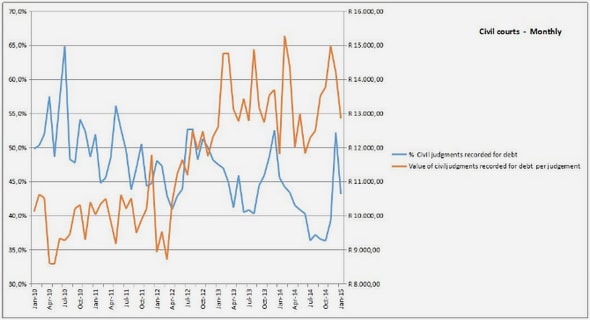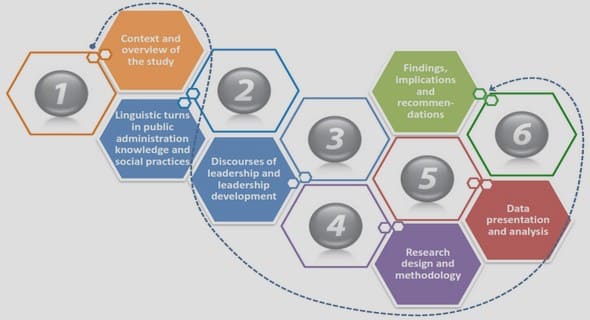Get Complete Project Material File(s) Now! »
Data
In this paper DJIM and NASDAQ Composite are set as dependent variables and S&P Global 100 is set as a proxy for market index benchmark in order to test whether the performance differentiates between the dependent indexes. Daily data of secondary market U.S. AA rated 90 days Treasury bill is used as a proxy for the risk-free rate of return. We collected daily data from Yahoo Finance, Google Finance and the Federal Reserve website. Each of the indexes presented had missing values in the data set on different dates. For example some holidays and natural disasters may be reason for a stock exchange to close down on days where stock exchanges in other countries do not. These dates are removed so the results of these missing values would not give uneven numbers of observations and may cause biased conclusions and results. This leaves us with collected adjusted prices for 1164 days starting from January 4, 2007 to March 28, 2012. A time period limited to the financial crisis due to the sole interest of drawing conclusions from this period alone, since previous work have already covered what is of interest in times before 2007.
Indexes
This section will give a review of the various indexes analyzed in this paper and explain why just these are used.
Dow Jones Islamic World Market Index (DJIM) was launched in 1999 and is one of the first Islamic equity indexes. DJIM is targeted towards the world’s 1.5 billion poten-tial investors that are acquired to follow Islamic Law. Suitable companies for this index are screened by the Shariah Supervisory Board to pass a few certain guidelines for Sha-riah compliance. DJIM is not weighted by complete market capitalization, rather weighted by free-floating market capitalization reflecting the actual numbers of shares available to investors. It seeks to have market index coverage over 44 countries, amounting to more or less 2000 components, since the screenings will remove or add companies continuously.
Hakim and Rashidian (2004) explains that for a company to be included in DJIM Index, its way of conducting business must pass three filters:
To complete the first filter, the primary business must be “halal”. Which means; it is strictly prohibited to include companies that engage in business activities and products such as gambling, alcohol, tobacco, armaments, pornography and pork. The second filter contains some specific financial constraints a company needs to meet in order to be included: The screened company’s debt ratio cannot surpass 33 percent. The accounts receivables to total assets must remain below 45 percent. And interest in-come should account for a maximum of 5 percent of total income, in other words re-main beneath the five percent mark.
Finally the third and last filter states that whenever a company surpasses these limits, it will be removed and replaced in the index by another company.
The Shariah Supervisory Board advices Dow Jones indexes on issues relating to com-pliance into the Dow Jones Islamic World Market Index. Approximately 75 percent of listed companies are neglected, whereas remaining companies are considered for in-vestments.
NASDAQ Composite, which is a global index, is calculated as a market capitalization weighted methodology index. It was introduced in 1971 and contains today over 3 000 securities. The stocks that are included must be listed on the NASDAQ market or were dually listed on another stock market since before 2004 and maintain such status. It lists 3000 stocks in both U.S. and non-U.S. markets and for inclusion it demands that non-US based companies has shares denominated in U.S. dollars and can be traded in the U.S. as any other “domestic” equity. Without the Islamic screening processes and its global integration of companies worldwide, NASDAQ Composite is a conventional equivalent to DJIM, thus the choice of comparing these two world market indexes.
Standard and Poor 100 Is a stock market index from Standard and Poor including stocks from all around the world. The index measures the performance of 100 multina-tional companies. It includes 100 large-cap companies taken from the S&P GLOBAL Index whose intentions are global business and gaining a substantial portion of their op-erating income from numerous countries. With its 100 global leading corporations S&P100 is an applicable representation of a benchmark proxy.
Methodology
The objective of this thesis is to find out if the investment performance of an Islamic screened index is different compared a conventional index, in this case DJIM compared to NASDAQ Composite. To determine if there is a difference statistically both a para-metric t-test and a non-parametric signed-rank test are conducted on the basis of MRAR and the Jensen measure of abnormal returns. The null hypothesis when testing the MRAR equation states that mean values of DJIM and NASDAQ’s risk adjusted returns are equal to zero. The null hypothesis when testing the Jensen measure states that there is zero difference in each index’s abnormal return.
In order to employ the chosen methodology we must first process the data using equa-tion (1). We begin by calculating the raw returns on a daily basis throughout the time period, it is done by taking the logarithmic difference of each index’s daily closed ad-justed price.
Where Ri,t is the daily raw rate of return for index i (DJIM and NASDAQ Composite) at time t, Pi,t signifies the price of index i at time t and Pi,t-1 is the price in previous peri-od (the day before).
We use the Capital Asset Pricing Model in order to estimate risk-adjusted returns, be-cause neither index share the same category of risk.
The risk-free daily return is denominated by a 90 day U.S. Treasury Bill, the market return is taken from S&P100 which is used as a proxy for the market index. Theβi,t coefficient measures assets i’s risk in relation to the systematic (benchmark) risk.
Leaving εi,t as an error term.
turn on the benchmark index. If beta is larger than one, this suggests that index i has higher risk than the benchmark index m. An example of the beta’s impact in the CAPM analysis would be if the benchmark index’s return increases by 1 percentage point and the beta coefficient is, at that time, 2.0, the studied asset’s return on average would then increase by 2 percentage points.
The CAPM regression also produces R2 values, which shows the correlation between the indexes, i, and the benchmark index m. To diversify portfolios in order to get a bet-ter performance at lower risk a low statistically significant R2 is preferable, since the idea behind modern portfolio theory is that movements of new assets should be as inde-pendent from current holdings as possible.
Results & Analysis
In this section we present the results of the equations and tests explained in the method-ology section. The results are presented in the form of tables starting with the output of capital asset pricing model. Second we present tests for significant differences in table 2 and last we present the ranking measurements to practically get a picture of the results in table 3.
The residual graphs in the appendix sections, DJIM and NASDAQ Composite show de-pictions of birds-nests in each case, which satisfy the assumption of homogenous resid-uals to exclude any problems of heteroscedasticity. We also test the data for a normal distribution and conclude that we cannot reject the assumption of a normal distribution seen in appendix section testing for normality. Given that we cannot reject the assump-tion of a normal distribution we also use non-parametric tests in the comparison of in-dexes (Hussein (2004)).
The autocorrelation is monitored by using Durbin-Watson Statistic. The DW values lies between 2 and 2.49 which indicate that negative autocorrelation might be present since both the values are higher than DW rule of thumb of 2. Although dealing with time se-ries analysis it is common to come by slight autocorrelation mainly due to inertia where time series data such as GDP, interest rates or stock prices can experience a trend which is detected as autocorrelation. This suggestion of a possible present negative autocorre-lation can also be viewed as a downward trend considering our time period is covering the economic crisis.
Table 1 displays the output of the CAPM analysis, equation (2), it shows the mean risk-adjusted daily performance of each studied index. Starting with the mean difference of returns we can see that NASDAQ Composite has a positive change of 0,0001 compared to DJIM on a daily basis. This is a minimal change but not surprising given that the change occurs on a daily basis. Continuing we can see that the volatility of the studied indexes are also very much alike with an advantage to DJIM in terms of deviation of the indexes mean-return with a lower value than NASDAQ Composite.
1. Introduction
2. Literature review
2.1 Theoretical framework
2.2 Previous Finding
3. Data
3.1 Indexes
4. Methodology
5. Results & Analysis
6. Conclusion
GET THE COMPLETE PROJECT
Risk-adjusted return performance on a screened index


